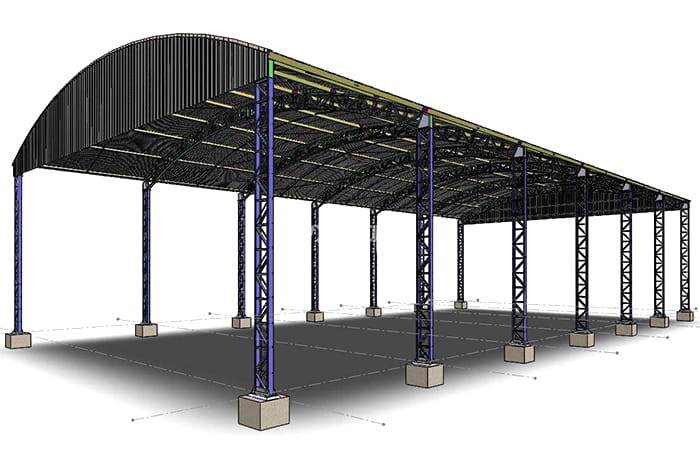
Building codes specify the number of hours a structure must withstand a given temperature, based on a variety of characteristics of the building in question. There are three key considerations when creating a fire protection plan: life safety, fire suppression, and protection of the structure. We’ll focus on common ways to protect a steel structure here.
EFFECT OF TEMPERATURE ON STEEL
Even noncombustible materials such as steel can be affected by high temperatures. However, because structural elements are not usually loaded to their full design strength, even bare steel may have sufficient load-carrying capacity to withstand the effects of fire.
In general, structural steel retains 60% of its ambient temperature yield strength at 1,000 °F--and most building fires exceed that temperature at some point.
The standard fire test uses constantly increasing temperatures, assuming that the fire has an infinite supply of fuel and the members are loaded to full design load. When building codes specify fire-resistant construction based on the results of these tests, structural steel elements must be insulated with protective materials.
Many such materials and systems have performed well in testing. Contractors must take great care to install all of them properly while maintaining the physical integrity that makes them insulate so well.
STRUCTURAL STEEL BUILDINGS PERFORM WELL WHEN EXPOSED TO FIRE.
Steel is a durable, noncombustible, fire-resistant material. When properly designed and constructed, steel framing can preserve its structural integrity in the event of a fire and exposure to prolonged elevated temperatures. The International Building Code (IBC) and other current building codes contain prescriptive criteria for determining when and what requirements apply for the various types of construction, heights, areas and occupancies.
Fire protection is accomplished through a combination of active and passive fire protection methods. Many steel-framed structures, including some low-rise buildings, sports stadiums and open-deck parking structures, do not even require fire protection or only require active fire protection (sprinkler systems). However, when passive fire protection is required there are several cost-effective coating options that can not only achieve a suitable fire rating, but also look attractive if the steel is left exposed.
Regional Sales Manager
Zhejiang Ruico Advanced Materials Co., Ltd. (Stock No.873233)
Add: No.188, Liangshan Road, Linghu Town, Nanxun District, Huzhou City, Zhejiang Province, China 313018
Phone: +86 (572) 2903236
Fax: +86 (572) 2905222
WhatsApp: +86 15968208672
Cellphone: +86 15968208672
Website:www.ruicoglobal.com
E-mail: [email protected]
